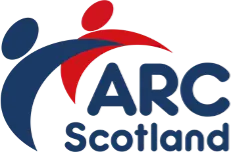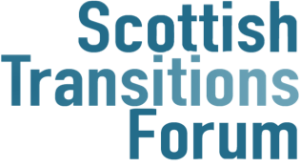Principle 5
Young people, parents and carers must have access to the information they need
If you can start that process early and do it in the right way with the right information it’s going to make all the difference possibly between a good life and a not so good life for your child.
(PARENT) – ‘TALKING ABOUT TOMORROW’ FINAL REPORT, CONTACT 2019
Jump to section:
We provide information that clearly states what young people are entitled to during transitions
Indicator 5a
We provide information that clearly states what young people are entitled to during transitions

Assessing
- In our organisation we are reviewing the information we provide to young people and carers about their rights, entitlements, eligibility criteria and the transitions planning process to ensure it is accurate and accessible.
- In our organisation we are consulting with young people, parents and carers about what information they need to prepare for a successful transition.

Improving
- In our organisation we are working with young people, parents and carers to produce information responsive to their differing information needs. We are working alongside them to find the most effective ways to disseminate information and ensure we reach everyone.
- In our organisation we provide information to young people and families in transition, so they know what their rights are.
- In our organisation we have easy to access information on how we are held accountable if the rights of young people and their families aren’t being met. The process to make a complaint is clear and accessible.

Delivering
- Young people, parents and carers tell us that they know what they are entitled to, and who should be involved during the transitions process.
- Young people tell us they know what their rights are.
- Parents and carers tell us they know how to complain or get help if things are not working well.
Indicator 5b
We provide information that shows what support is available

Assessing
- Working with others across our local area we are mapping the range of support options available to young people.

Improving
- Working with others we are trialling ways to make information accessible, this might include asset-mapping websites, social media or local transitions fairs. We are consulting with young people, carers and frontline practitioners to get their ideas and feedback.

Delivering
- Young people, parents and carers tell us they have the information they need about available options and support.
Indicator 5c
We provide information that is inclusive of different communication needs

Assessing
- In our organisation we are reviewing all the information we provide; looking at the content, method of dissemination and assessing how inclusive it is of different communication support needs.

Improving
- In our organisation we are consulting with young people, parents and carers about ways to improve our inclusive communication. Formats might include British Sign Language, alternative audio and video, assistive technologies, board maker, easy read and Talking Mats.

Delivering
- We use inclusive communication to provide information to young people and carers.
- Professionals tell us they are confident in using inclusive communication.
Indicator 5d
We provide information that uses common and agreed language

Assessing
- Working with others we are developing consistency in the language we use in the information provided to young people, parents and carers during transition.

Improving
- In our organisation we are changing the information we provide to make sure we use consistent language across services and avoid the use of professional jargon.
- In our organisation we are asking young people how helpful they feel the information they are given is, and how it could be improved.

Delivering
- Our information uses common and agreed language across services and is free from professional jargon.
Linking with the other principles
How this Principle relates to the others
Here are some prompt questions to help you to identify how this Principle relates to the others.
- Do you signpost to services that provide legal advice or advocacy services for young people and carers who are dissatisfied with their transitions planning or outcome? (see Principle 6)
- Do young people and those who care for them have information about local person-centred planning opportunities? (see Principle 1)
- Are young people and those who care for them aware of the different services they can access and what the eligibility criteria are? (see Principle 4)
- Do you have a joint transitions pathway and if so do young people, their parents or those who care for them know how to access this information? (see Principle 2)
Evaluation questions
The questions we asked
We asked young people:
Scale: Select one of the options – Yes, Not sure, No
- Do you know what your options are for your future?
- Do you know what support you can get to make your dreams and goals a reality?
- Do you know who should be helping you to work out your next steps?
- Do you know what your rights are?
We ask parents and carers:
Rate the following statements using a scale of 1 – 5 (where 1 = strongly disagree and 5 = strongly agree)
- I have the information I need about options and support available for the future.
- I know what young people and families are entitled to during the transition process.
- I know how to complain or get help if things are not going well.
We ask practitioners:
Rate the following statements using a scale of 1 – 5 (where 1 = strongly disagree and 5 = strongly agree)
- You are confident in using inclusive communication.
Data question:
Resources
Links to relevant resources
Clicking the links will take you to the relevant resources:
- Talking About Tomorrow: Preparing Parents in Scotland for Transition
- Autism Toolbox
- Supporting disabled children, young people and their families: guidance
- Augmentative and Alternative Communication (AAC) Scotland
- Principles of Inclusive Communication
- Inclusive Communication Resources (The Royal College of Speech and Language Therapists)
- Scotland’s Inclusive Communication Hub
- Journey Through Justice – interactive online resource (Centre for Youth and Criminal Justice)


